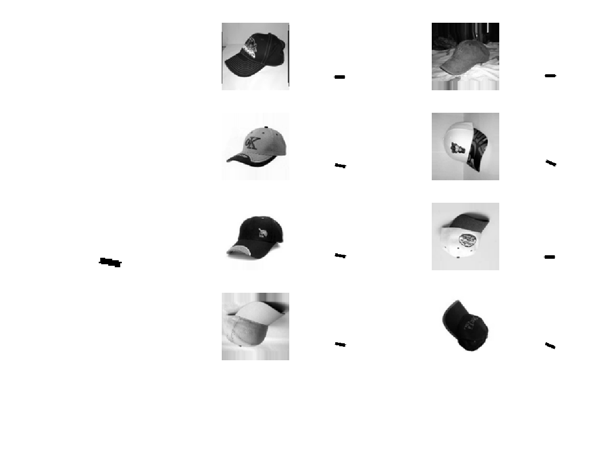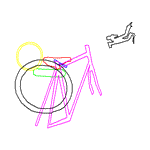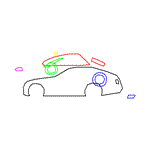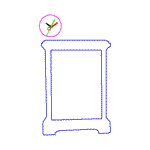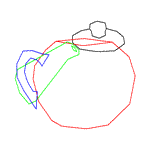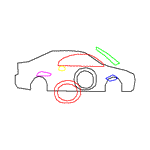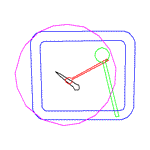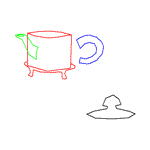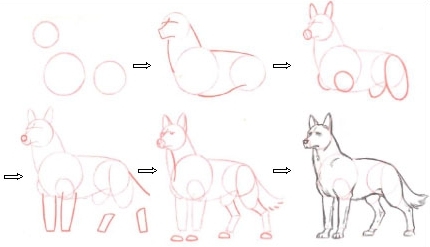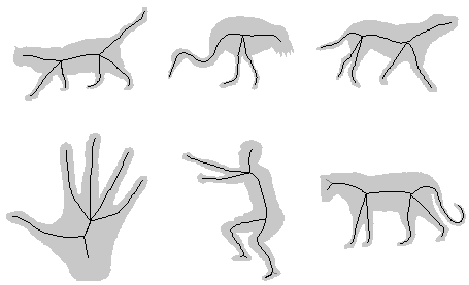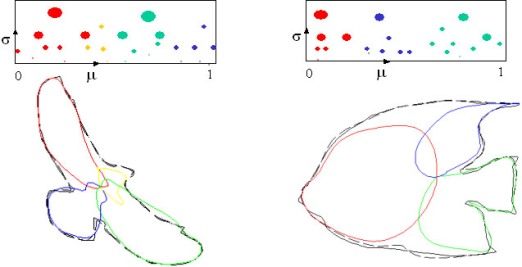Learning image templates
Learning Compositional Models for Object Categories
|
We present a method for learning a compositional model in a minimax entropy framework for modeling object categories with large intra-class variance. The model we learn incorporates the flexibility of a stochastic context free grammar (SCFG) to account for the variation in object structure with the neighborhood constraints of a MRF to enforce spatial context. We learn the model through a generalized minimax entropy framework that accounts for the dynamic structure of the hierarchical model by pursuing relations according to their frequency of occurrence. The learned model can generalize from a small set of training samples (n<100) to generate a combinatorially large number of novel instances using stochastic sampling ... |
Graph matching
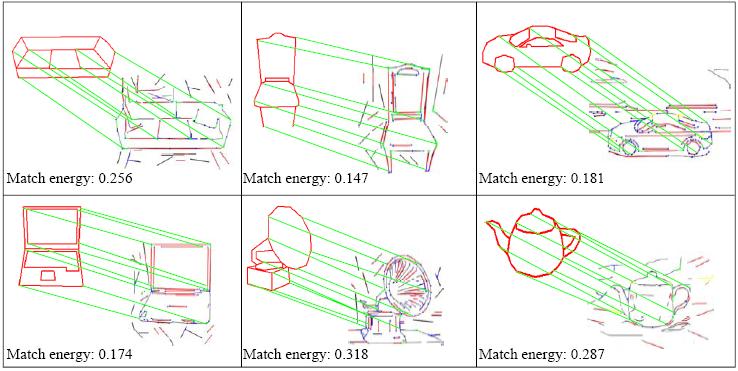
|
This project studies a framework for matching an unknown number of corresponding structures in two images (shapes), motivated by detecting objects in cluttered background and learning parts from articulated motion. Due to the large distortion between shapes and ambiguity caused by symmetric or cluttered structures, many inference algorithms often get stuck in local minimums and converge slowly. We propose a composite cluster sampling algorithm with a "candidacy graph" representation, where each vertex (candidate) is a possible match for a pair of source and target primitives (local structure or small curves), and the layered matching is then formulated as a multiple coloring problem. |
Shape modeling
|
Shape modeling is to represent generic object geometry by a number of models which account for the regularity and variablity of natural objects. Shape modeling is the fundation for object recognition under change of pose, deformation, and varying lighting coditions. However, this is an extremely hard problem, and most of the mathematical studies appear to be totally irrelevant to natural object shape description. |


